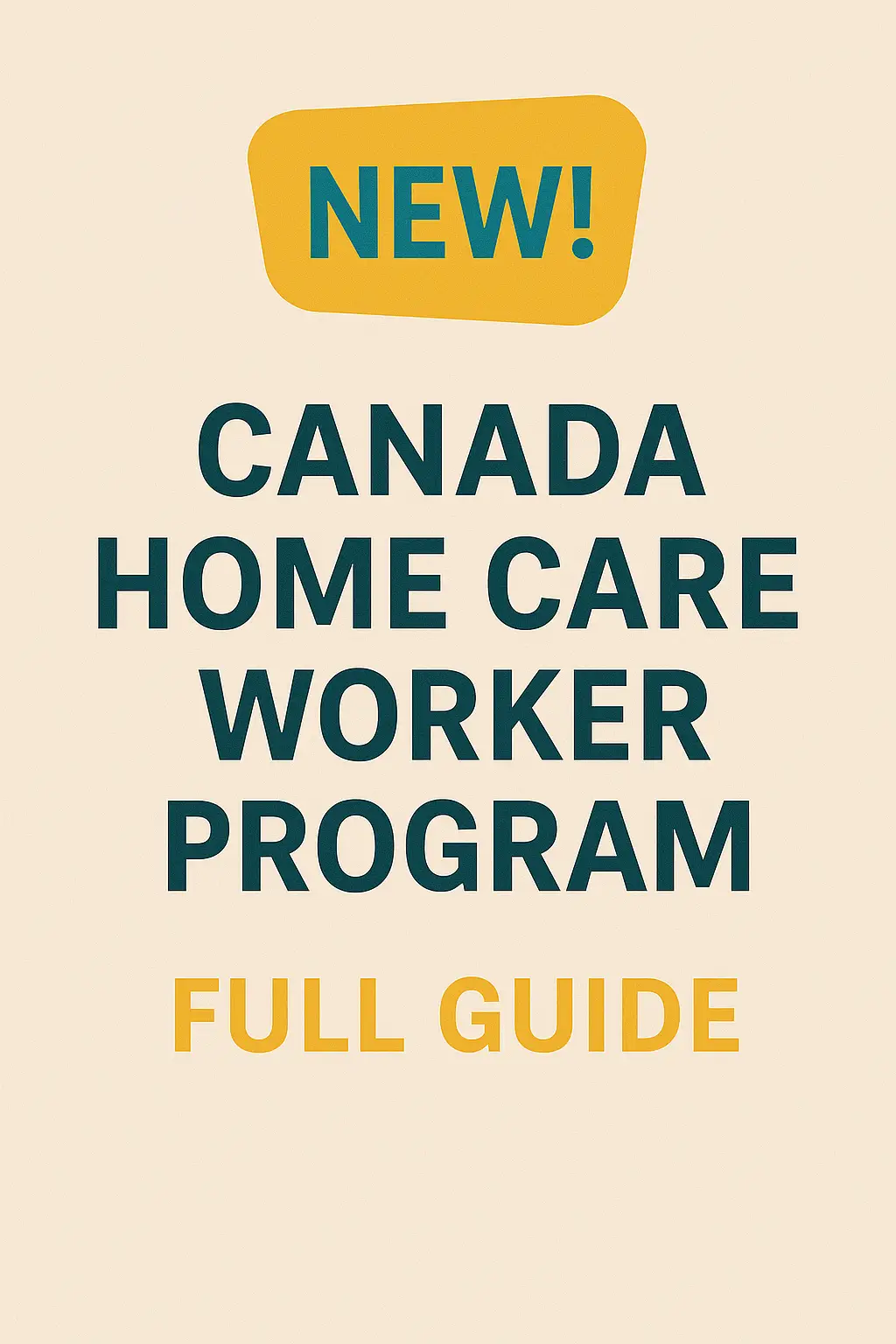Are you passionate about caregiving and dreaming of building a stable, rewarding future in Canada? The Home Care Worker Immigration Pilots (HCWP), launching on March 31, 2025, could be your ticket to Canadian permanent residency (PR). This transformative program replaces the previous Home Child Care Provider and Home Support Worker Pilots, offering a streamlined pathway for skilled caregivers to settle in Canada with their families. In this comprehensive guide, we’ll walk you through everything you need to know about the new Canada Home Care Worker Program, including eligibility, application steps, and tips for success—all optimized for SEO to help your WordPress blog rank higher and attract the right audience.
What is the Canada Home Care Worker Program?
The Home Care Worker Immigration Pilots (HCWP) is a Canadian immigration initiative designed to address the growing demand for in-home caregivers. Announced by Immigration, Refugees and Citizenship Canada (IRCC) on June 3, 2024, and set to launch on March 31, 2025, this program offers foreign home care workers a direct path to permanent residency upon arrival in Canada. Unlike its predecessors, the HCWP simplifies eligibility requirements and expands job opportunities, making it easier for caregivers to contribute to Canadian communities while securing a stable future.
The program includes two streams:
- Workers in Canada Stream: For caregivers already living and working in Canada.
- Applicants Not Working in Canada Stream: For those outside Canada (launch date TBD, expected later in 2025).
With an aging population and increasing need for home-based care, Canada is opening its doors to skilled caregivers, offering not just jobs but a chance to build a life in a welcoming country. Whether you’re caring for children, seniors, or individuals with disabilities, this program is designed to support you.
Why Choose the Home Care Worker Program?
The HCWP stands out for its accessibility and benefits. Here’s why it’s a game-changer for caregivers:
- Permanent Residency on Arrival: Unlike older programs requiring years of Canadian work experience, qualified applicants receive PR immediately upon entering Canada.
- Flexible Employment Options: Caregivers can work in private homes, healthcare organizations, or agencies providing temporary/part-time care for semi-independent individuals or those recovering from illness or injury.
- Family-Friendly: Bring your immediate family members to Canada for a secure, stable future.
- Lower Eligibility Barriers: Reduced language and education requirements make the program accessible to more applicants.
- High Demand: With Canada’s aging population, home care workers are in critical demand, ensuring job stability.
This program not only supports caregivers but also strengthens Canadian families and communities by ensuring high-quality in-home care.
Eligibility Requirements for the Home Care Worker Program
To qualify for the HCWP, you need to meet specific criteria. The good news? The requirements are more accessible than ever. Here’s what you need:
- Language Proficiency: Achieve a Canadian Language Benchmark (CLB) or Niveaux de compétence linguistique canadiens (NCLC) level 4 in English or French. This is lower than the previous requirement of CLB 5, making it easier for applicants. Approved tests include IELTS (minimum 4 in writing/speaking, 4.5 in listening, 3.5 in reading).
- Education: Hold a credential equivalent to a Canadian high school diploma. You may need an Educational Credential Assessment (ECA) to verify foreign credentials.
- Work Experience or Training: Have at least 6 months of recent, full-time (30 hours/week) work experience in the past 3 years in a relevant home care occupation (NOC 44100 for Child Care or NOC 44101 for Home Support) OR a 6-month training credential related to home care. Experience can be gained in Canada or abroad.
- Job Offer: Secure a full-time, non-seasonal job offer from an eligible Canadian employer, such as private households, home health care providers, or organizations offering temporary care. Recruitment agencies and certain institutional roles (e.g., daycares, nursing homes) are not eligible.
- Intent to Reside: Plan to live in a Canadian province or territory other than Quebec.
Note: Out-of-status caregivers in Canada may also be eligible under a special public policy, with 150 spots reserved for this group in each pilot.
The Two Pilot Programs: Child Care and Home Support
The HCWP includes two distinct pilot programs, each targeting specific caregiving roles:
- Home Care Worker Immigration Pilot: Child Care (HCWP:CC)
- Home Care Worker Immigration Pilot: Home Support (HCWP:HS)
- Focus: Caregivers for seniors, individuals with disabilities, or those needing assistance (NOC 44101).
- Exclusions: Institutional settings like nursing homes or roles like Early Childhood Educators (NOC 42202) or Nurse Aides (NOC 33102).
- Cap: 2,750 applications per year (2,610 for 2025–2026), with 150 spots for out-of-status workers.
Both pilots have an annual cap of 5,500 applications combined, resetting each year on March 31. The Workers in Canada Stream hit its cap within hours of opening in 2025, so early preparation is crucial
How to Apply for the Home Care Worker Program
Ready to apply? Follow these steps to ensure a smooth application process for the Workers in Canada Stream (opening March 31, 2025, at 10 a.m. ET):
- Verify Employer Eligibility: Ensure your job offer comes from a qualified employer (e.g., private household or home care organization) meeting IRCC’s financial and regulatory requirements.
- Prepare Documentation:
- Language Test Results: Take an IRCC-approved test (e.g., IELTS, CELPIP) to prove CLB 4 proficiency. Tests must be less than 2 years old.
- Education Credential Assessment (ECA): Get your high school diploma assessed if obtained outside Canada.
- Proof of Work Experience or Training: Submit evidence of 6 months of relevant work or a training credential.
- Job Offer Letter: Include a detailed, full-time job offer from an eligible employer.
- Document Checklists: Use IMM 0270 (Workers in Canada Stream) or IMM 0273 (Out-of-Status Workers). Complete all sections, marking “Not Applicable” if needed, and explain missing documents.
- Submit Online: Applications are primarily accepted via IRCC’s online PR portal. Alternate formats (paper, braille, large print) are available for those needing accommodations.
- Act Fast: With only 2,610 spots per pilot in 2025–2026, apply early to avoid missing the cap.
- Track Your Application: Monitor updates through the IRCC portal and check for any changes in guidelines.
For the Applicants Not Working in Canada Stream, stay tuned for IRCC’s announcement on the launch date and additional requirements, such as proof of settlement funds.

